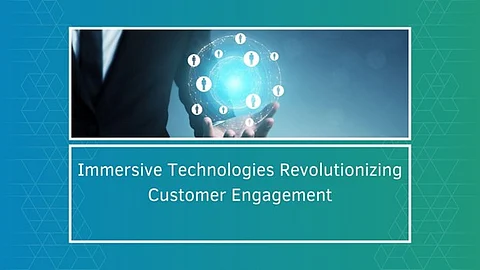

As technology continues to evolve, Augmented Reality (AR) and Virtual Reality (VR) are emerging as transformative tools for enhancing customer experiences. Praveen Kumar Peddamukkula, in his comprehensive study, explores how these immersive technologies are reshaping customer engagement strategies, creating personalized, interactive, and memorable journeys that bridge the gap between physical and digital realms.
AR and VR are revolutionizing customer interaction by blending physical and digital experiences. AR overlays digital elements onto the real world, while VR offers immersive virtual environments. These technologies enable engaging features like virtual try-ons and product demonstrations, transforming how customers perceive and connect with brands, fostering deeper engagement and enhancing customer retention.
Virtual try-on technology, a key AR innovation, lets customers visualize products like clothing, cosmetics, or furniture in their own environment, reducing uncertainty and improving decision-making. VR complements this by enabling immersive virtual showrooms, where customers can explore products in detail and understand customization options. Together, these tools streamline the buying process, enhance confidence in purchasing decisions, and build trust and satisfaction, revolutionizing how customers engage with products and brands.
AR and VR serve as impactful storytelling tools, allowing brands to craft engaging narratives that emotionally connect with audiences. By blending visuals, sound, and interactivity, immersive storytelling enhances brand recall and creates a sense of "presence," where users feel deeply immersed. These technologies amplify engagement, helping brands stand out in competitive markets while fostering loyalty and lasting customer relationships.
AR and VR are driving advancements in accessibility and education across industries. Virtual tours offer immersive exploration of locations, while interactive tutorials provide detailed insights into products and services. These technologies bridge the gap between online and offline experiences, ensuring customers gain comprehensive, engaging information. By presenting content in dynamic, user-friendly ways, AR and VR boost understanding, confidence, and satisfaction, ultimately enriching the customer experience and setting new standards for engagement.
Implementing AR and VR technologies comes with challenges like high costs, hardware requirements, and specialized expertise. However, businesses can address these issues by utilizing lightweight AR applications compatible with everyday devices, making the technology more accessible. Collaborating with experienced 3D content creators or training in-house teams can simplify content creation. Ensuring cross-platform compatibility enhances usability across diverse devices, while user-centric designs with intuitive interfaces reduce adoption resistance. These strategies not only expand the technology's reach but also encourage higher user engagement by making AR and VR solutions approachable and functional. Overcoming these barriers allows businesses to fully leverage AR and VR’s transformative potential.
AR and VR go beyond being technological innovations; they are strategic assets for businesses aiming to differentiate themselves in competitive markets. These tools enable highly personalized, interactive experiences that significantly boost customer loyalty and retention. Early adoption allows businesses to establish themselves as pioneers, gaining a competitive edge in an increasingly digital landscape. The capacity of AR and VR to deliver memorable and impactful customer interactions gives brands a unique opportunity to stand out as these technologies gain mainstream traction. By focusing on customer-centric applications, businesses can ensure their AR and VR investments create meaningful value and foster enduring relationships with their audiences.
To maximize the potential of AR and VR, businesses must implement these technologies thoughtfully. Pilot projects are an effective way to test their impact and refine strategies before scaling. Aligning AR and VR initiatives with clear customer needs and measurable outcomes ensures that investments yield tangible results. Security and privacy considerations should also be a top priority, as these technologies often collect sensitive user data. Implementing robust safeguards will help build trust and ensure a positive customer experience.
In conclusion, as Praveen Kumar Peddamukkula emphasizes, AR and VR are redefining customer engagement by offering personalized, interactive, and immersive experiences. These technologies are transforming how businesses connect with their audiences, opening up new opportunities for innovation and growth. By strategically integrating AR and VR into their operations, businesses can unlock immense potential, shaping the future of customer engagement in an increasingly digital world.
